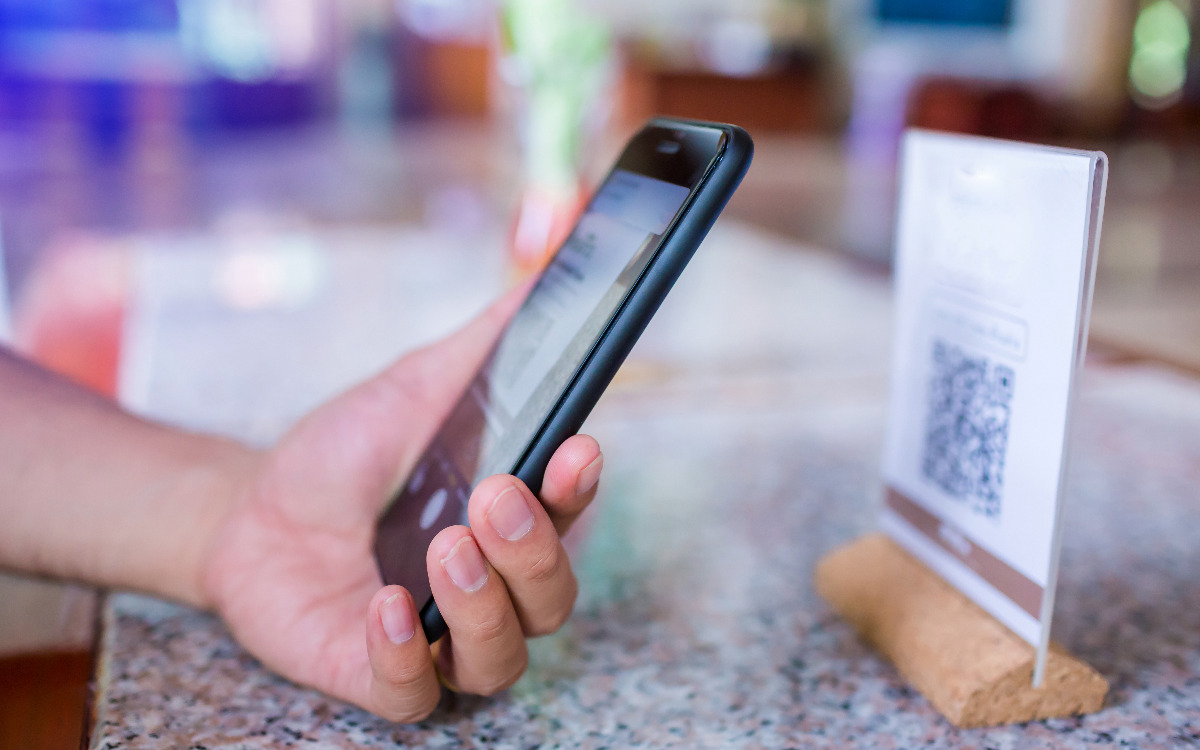As a digital convenience, QR codes are an easy way to communicate information. They can be used creatively, whether it’s a link to a website, a restaurant’s menu, a special event, or even augmenting an in-person experience such as a museum. Yet, with QR code usage growing by 250% between 2021 and 2023, QR code scams have risen again, too. It can bypass traditional email filters, and with nearly every modern phone having a built-in scanner, it isn’t easy to defend against.
Table of Contents
What Are QR Code Scams?
QR Code scams are deceptive practices involving Quick Response (QR) codes to trick individuals into revealing personal information, making unauthorized payments, or downloading malicious software. By embedding harmful links within these codes, scammers exploit the convenience of QR technology. Users, often unsuspecting, scan these codes with their smartphones, leading to potentially dangerous destinations.
These scams have evolved, encompassing a range of fraudulent activities such as phishing, payment redirection, and malware distribution. It’s not just an issue in the U.S. either. Bengaluru alone had over 20,000 reported cases, with 41% being payment-related. The growing reliance on digital transactions and contactless interactions has made QR codes a lucrative tool for cybercriminals. The challenge lies in their inherent trust and ease of use, which can make it easier to hide ill intent.
How Do QR Codes Work?
QR codes, short for Quick Response codes, work like advanced barcodes that can store much more information. When you scan one with a smartphone camera or QR code reader, the pattern of black squares on a white background is read and translated into digital information. This process quickly takes you to online content such as websites, digital business cards, or connects you to a Wi-Fi network. The design of QR codes allows for fast and accurate reading, making them highly useful for everything from advertising and secure payments to sharing information in a compact, easy-to-scan format.
Ways QR Code Scams Are Being Distributed
QR code scams are distributed in many ways, some of which may seem completely harmless. Here are some of the ways scammers are most often spreading them:
Emails: Scammers embed or attach QR codes in phishing emails, a technique known as “quishing.” These emails often mimic reputable companies and prompt recipients to scan the QR code, leading them to malicious sites where personal or financial information is stolen.
Public Spaces: QR codes are strategically placed in public areas like parking meters, benches, or transit stops. They pose as legitimate services, such as payment options or information points, but redirect users to fraudulent sites when scanned.
Social Media and Online Ads: Cybercriminals use social media platforms and online ads to disseminate malicious QR codes. These platforms’ wide reach and the casual trust users place in shared content make them effective for spreading scams.
Postal Mail: In package delivery scams, unsuspecting individuals receive mail with QR codes for tracking or other information. Scanning these codes can lead to phishing sites that request personal data or payment info.
Flyers and Posters: Scammers distribute flyers or posters in high-traffic areas, often with enticing offers or information accessible via a QR code. These codes, once scanned, can mislead individuals to scam websites or even initiate unwanted downloads of malware.
Given these diverse tactics, it’s crucial to approach QR codes with caution, particularly those from sources that aren’t well-known or trusted.
Some QR Codes Are Bypassing Email Spam Filters
Email filters are designed to detect and block potential threats by scanning the text content of emails for suspicious links and harmful language. However, when malicious links are embedded in QR codes, they are in image form, not text. Those images may also be attached as a file rather than directly embedded. That makes it hard for spam filters to detect.
As a result, QR codes can effectively evade the standard security checks that would typically flag and quarantine dangerous text-based content. This capability presents a new layer of risk, as recipients might unknowingly scan these codes. That can lead them to harmful websites or trigger malware downloads without the usual email security barriers to warn or protect them.
10 Common Types of QR Code Scams
QR code scams can come in many forms. Even though it’s a growing threat, many people aren’t aware of it. Understanding 10 of the most common types will make it easier to watch for them.
Phishing Scams (Quishing): Scammers send phishing emails with QR codes, leading victims to websites where they enter their credit card information.
Payment Fraud: Altered QR codes in public places like parking lots redirect payments to the scammer’s account.
Package Scams: Unsolicited packages with QR codes, when scanned, prompt users to enter personal information under the guise of order details or returns.
Cryptocurrency Scams: QR codes deceive individuals into fake cryptocurrency giveaways or investments, resulting in cryptocurrency theft.
Donation Scams: Scammers impersonate charities or create fake charities, using QR codes to solicit donations.
Malware Distribution: QR codes lead users to download malware or spyware, threatening data security and device integrity.
Fake Wi-Fi Networks: QR codes trick users into connecting to scammer-controlled Wi-Fi networks, exposing their data.
Social Engineering Scams: Directing users to deceptive websites that trick them into sharing personal information or downloading harmful software.
Counterfeit Product Scams: QR codes on counterfeit products lead to fake brand websites, giving an illusion of legitimacy.
False Advertising: QR codes in advertising mislead users, promising one thing but redirecting to scams.
Sweepstakes or Prize Scams: False notifications of winning a prize, leading victims to fraudulent websites asking them to provide personal information or payment for non-existent prizes.
How To Avoid Getting Scammed by a QR Code
To avoid QR code scams, practicing caution and staying informed is essential. Firstly, only scan QR codes from trusted sources and be wary of codes found in unsolicited emails, flyers, or public places. Verify the authenticity of a QR code, especially if it’s linked to financial transactions or personal information sharing. Always check the URL after scanning to ensure it leads to a legitimate website.
Additionally, avoid entering personal information or making payments through a QR code unless you know its legitimacy. When in doubt, it’s always worth typing the website’s URL directly or navigating it from a trusted search engine. Educating yourself about the common types of QR code scams can also help recognize and avoid potential threats. Remember, if a QR code offer seems too good to be true, it likely is.
What To Do if You’ve Fallen for a QR Code Scam
If you suspect you’ve fallen victim to a QR code scam, follow these steps to mitigate the situation:
Secure Financial Accounts: If you’ve entered payment details, contact your bank or credit card provider immediately. Inform them about the potential fraud and discuss steps to secure your accounts, like freezing your cards or monitoring for unusual transactions.
Change Your Passwords: If you suspect your login details of any online account may have been compromised, change the passwords immediately. Use strong, unique passwords for each account.
Scan for Malware: Perform a thorough scan of your device using a reputable antivirus or security software. That helps detect and remove any malware that might have been downloaded.
Report the Incident: Report the scam to appropriate authorities, such as the Federal Trade Commission (FTC). Some regions have specific platforms for reporting cybercrimes.
Stay Informed and Alert: Regularly update yourself about the latest scamming techniques and maintain vigilance when dealing with QR codes in the future. Sharing your experience can also raise awareness among your peers.
Quick and informed action can significantly reduce the impact of a QR code scam, helping protect your personal information and financial resources.
Make Sure To Use QR Codes Carefully
As we’ve seen, the simplicity and widespread adoption of QR codes, while convenient, also make them a ripe target for scammers. Their ease of use means they can be seamlessly integrated into everyday scenarios, making distinguishing between legitimate and fraudulent codes harder. It’s this very accessibility that scammers exploit, blending their malicious codes into seemingly harmless contexts.
Therefore, it’s essential to approach QR codes with a critical eye. Always verify their source, especially in sensitive information or financial transactions. Remember, your first defense against QR code scams is awareness and careful usage. By staying vigilant, you can enjoy the benefits of this technology while safeguarding your personal and financial information.




